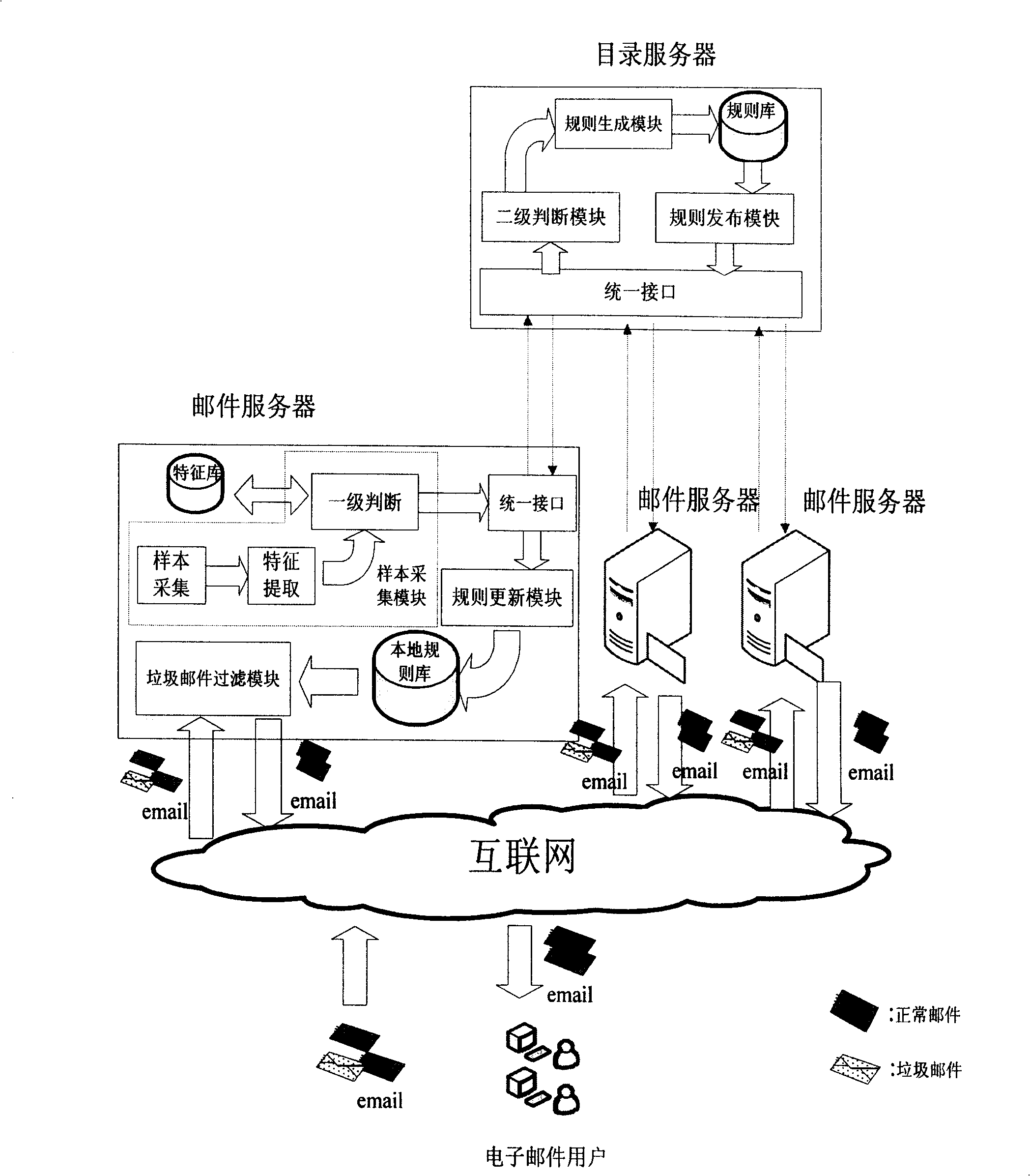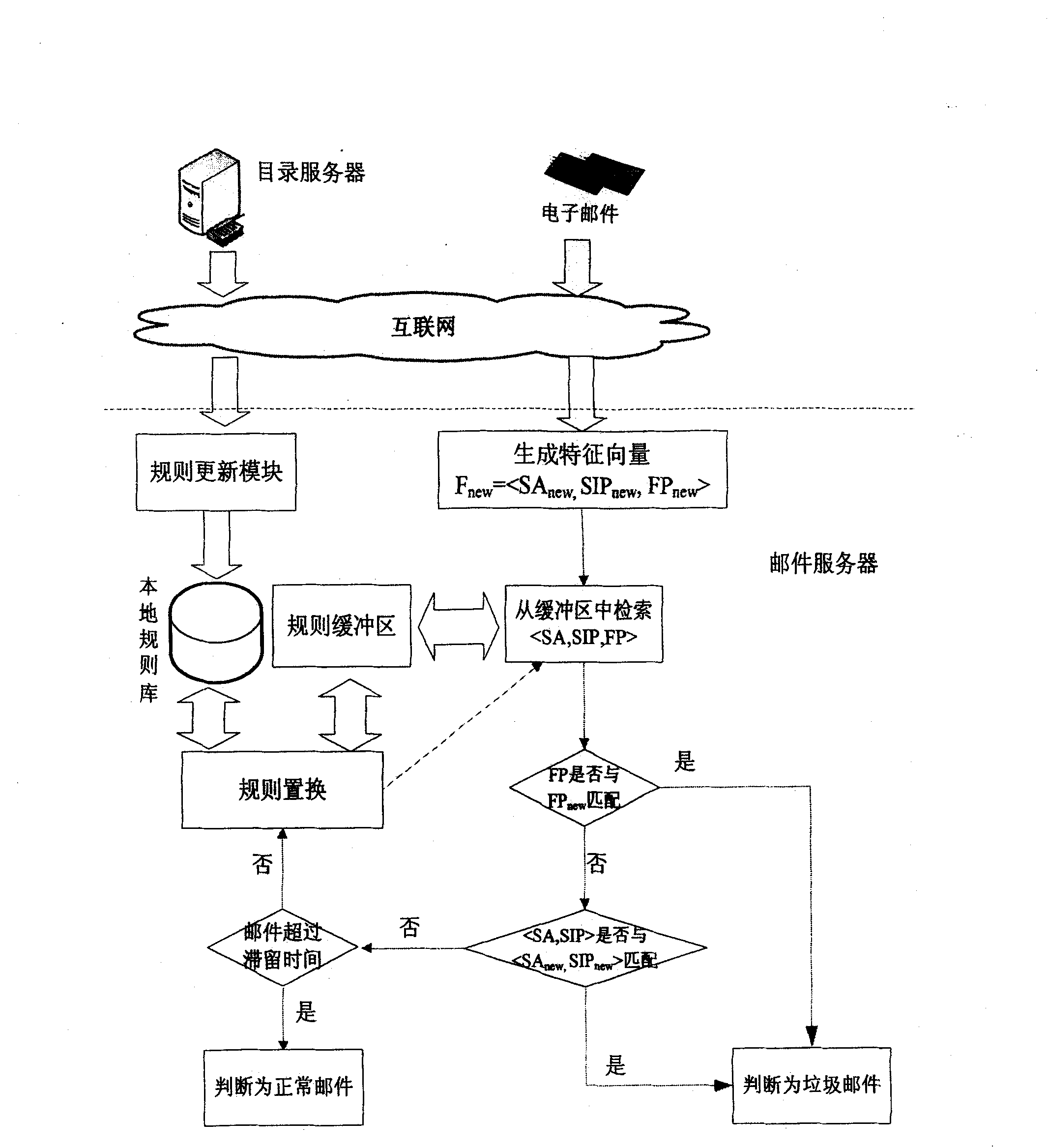Method for preventing collaboration type junk mail
A spam and collaborative technology, applied in the field of network security, can solve problems such as inability to cooperate with each other, reduce filtering accuracy, and slow update speed
- Summary
- Abstract
- Description
- Claims
- Application Information
AI Technical Summary
Problems solved by technology
Method used
Image
Examples
Embodiment Construction
[0052] The method of the present invention is further described as:
[0053] a. The mail server reads the relevant information of the mail account, and combines these information to score each account according to the honeypot account evaluation formula, and then writes the calculated scores into the account database of the system in descending order , update the account scoring table;
[0054] b. Determine the honeypot set: at this stage, first set the initial honeypot set to be empty, then the system reads the account score table in the database, preferentially selects accounts with higher scores and adds these accounts into the honeypot set, each After increasing the honeypot account for the first time, count the number of spam in the collection; since the number of spam in the server is limited, as the collection continues to increase, the number of spam collected from the collection will tend to be constant. value, when the increment of spam in the collection after addin...
PUM
 Login to View More
Login to View More Abstract
Description
Claims
Application Information
 Login to View More
Login to View More - R&D
- Intellectual Property
- Life Sciences
- Materials
- Tech Scout
- Unparalleled Data Quality
- Higher Quality Content
- 60% Fewer Hallucinations
Browse by: Latest US Patents, China's latest patents, Technical Efficacy Thesaurus, Application Domain, Technology Topic, Popular Technical Reports.
© 2025 PatSnap. All rights reserved.Legal|Privacy policy|Modern Slavery Act Transparency Statement|Sitemap|About US| Contact US: help@patsnap.com



